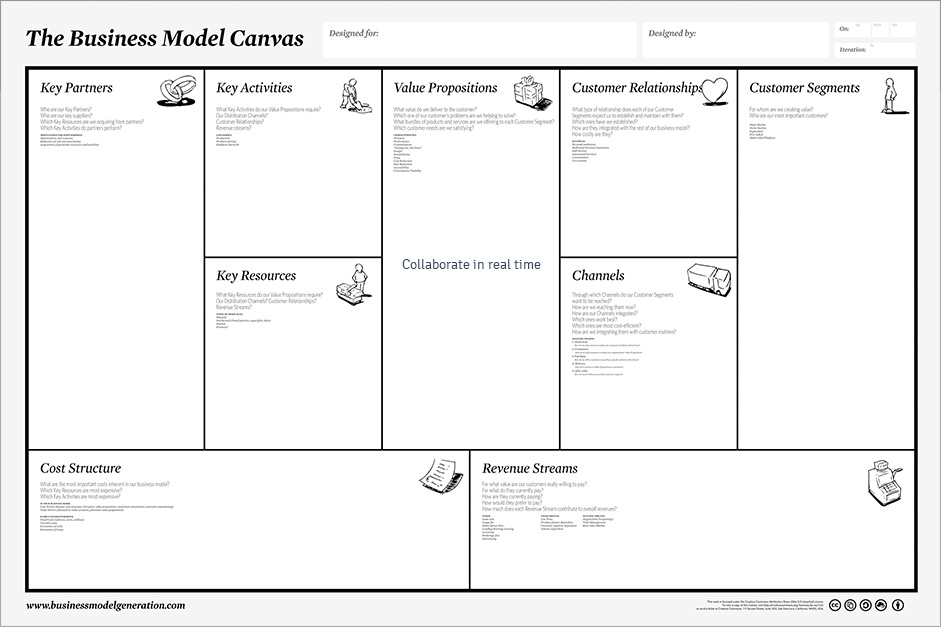what is a business model : a simple guide for the future entrepreneur

wether you are considering building your own business, studying business or just have been alive the last decade. You must have heard the term busines -at least a million times-. There is no shortage of books, guides and blogs talking about entrepreneurship in general and business models in particular. But what i noticed with those resources , is that most of them are plain confusing. Some of them tackle the subject on a too narrow scope some of them talk about everything except what trully a business model is. I am going to cut the crap now and head to the meat of the subject.
A business model simply defined is: the way your business - any business - creates, delivers, and captures value. Value in the business world means anything that is helpful to people and that they are willing to make some sacrifice for ( not just money ).
So a business model is basically a business idea, No ? and the answer is nope and a big one. a Business idea is the starting point, it's that little light bulb that ignites and lets you go "hmmm it would be nice having a product that does this and that".
The business model on the other hand is a detailed description of what you're going to offer, to whom, how, with the help of what/whom and what you'll get in return. But why should you even care? the answer is: because you want your business to take off. When you know nothing about business and the marketplace, you might be excited to launch that awesome product that will change the world, and make you rich in the process.
Well it's a little trickier than that. It's not impossible to launch a company from gut feeling and succeed but the odds aren't on your side. So take it easy, calculate, build a business model, tweak and iterate until you get to THE one.
Now you know what's a business model, and you're aware of the importance of having one. The next step is to actually build one, but how do you do that?
One of the best ways to create a business model is to use a framework that has been tested once and again. The use of a framework makes building your business model almost as simple as filling-in the gaps. Tthat's because you already have your structure, you just need your data. It also helps standarize the language, a business model could mean something to me and and another thing to you. Using a standard reference unifies the views and prevents confusion.
There are many business model tools and you could craft your own, a business model isn't precise science. But one of the best if not the best at all is: the business model canvas developed by Alex Osterwalder. It contains 9 sections, each one tackling one aspect of your business model, and that's what we're going to be talking in a future post.
This was a very brief introduction to the fabulous world of business and entrepreneurship through the concept of the business model. I hope you learnt something usueful while reading those lines. Knowledge is power, use it wisely.
A business model is the blueprint that outlines how a company creates, delivers, and captures value. For future entrepreneurs, understanding this framework is crucial. Imagine you're launching Smart Health Shopping an innovative platform connecting users with personalized health products. Your business model would detail how you acquire customers, deliver tailored recommendations, and monetize through subscription services or affiliate partnerships. It's the strategic roadmap guiding your venture towards success.
Howdy! While storage units can be a useful solution for storing things, storage unit issues can arise and this is important for everyone to consider. Anyone who wants to use the services of a particular company should study various warehouse facilities, think through security measures, if necessary, choose a climate-controlled room, maintain order, and be mindful of costs. By being aware of these potential problems and taking steps to address them, the user can ensure a positive storage experience.
A business model outlines how a company creates, delivers, and captures value. It includes various components, such as revenue streams, target customers, and the cost structure. For instance, a company offering an inkless printer may highlight its unique selling proposition: the elimination of ink cartridges, reducing long-term costs for consumers. By focusing on sustainability and convenience, the business model can attract environmentally conscious customers and businesses seeking cost-effective printing solutions. Ultimately, a well-defined business model is crucial for achieving profitability and long-term success in any market.